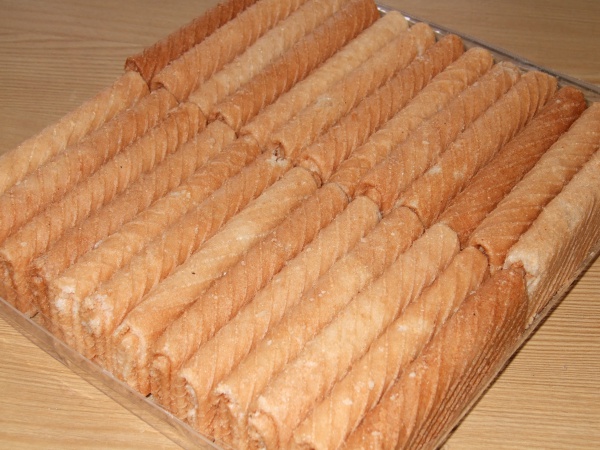Facts About Semprong
Kue Semprong, also referred to as the Asian egg roll, sapit, sepit, kue Belanda, or kapit, is a cherished traditional Indonesian wafer snack. It's crafted by pressing an egg batter in an iron mold heated over a charcoal stove. This delightful treat is popular not only in Indonesia but also in Malaysia, Singapore, and Brunei.
The molds used for making kue semprong consist of two plates that are clasped together using handles. These molds come in various designs—some are flat, others are corrugated, and some even feature whimsical animal motifs such as fish, roosters, and snails.
In terms of shapes, "semprong" translates to "tube" or "roll" in Indonesian, while "sepit" derives from "jepit" meaning "clip." Thus, a semprong is roll-shaped, and a sepit is folded into a triangle. In Malaysia and Brunei, they are uniformly referred to as sapit or sepit, regardless of shape. Traditionally, kue semprong is hollow, but contemporary variations often contain delectable fillings like chocolate or cheese.
The origins of kue semprong can be traced back to the colonial era when Indonesia was under Dutch rule. The snack is believed to have evolved from Dutch egg roll wafers, which explains why it's known as kue Belanda (Dutch cake) in Malay. The Dutch brought with them a variety of biscuit recipes, including thin wafer biscuits similar to kue Belanda or kuih kapit. These baking techniques were shared with the Malays by the Dutch, as well as the English and Portuguese.
The Peranakan Chinese from Penang and Malacca likely introduced this snack to Malaysia and Singapore. They called it kuih Belanda or kuih kapit, as they did not have a specific name for the Dutch-inspired treat they encountered. Today, kue semprong remains a delicious reminder of a rich culinary history shared across these regions.

 Malaysia
Malaysia